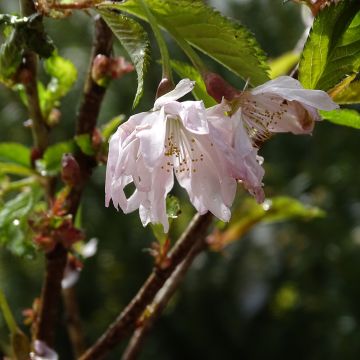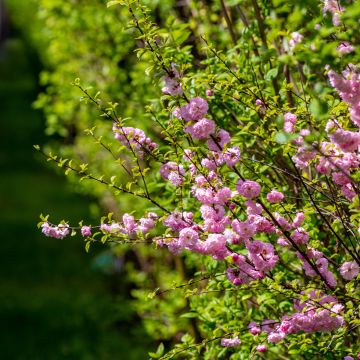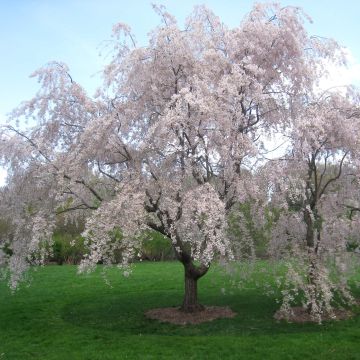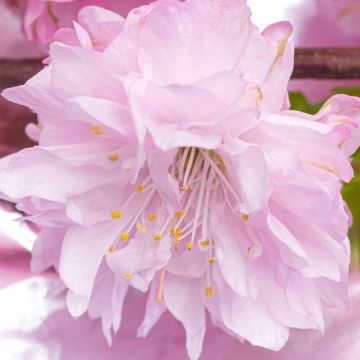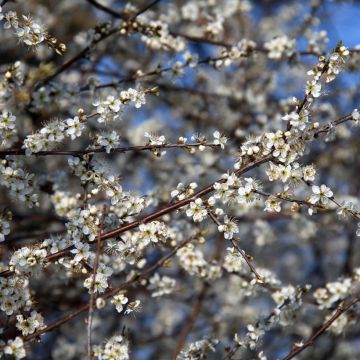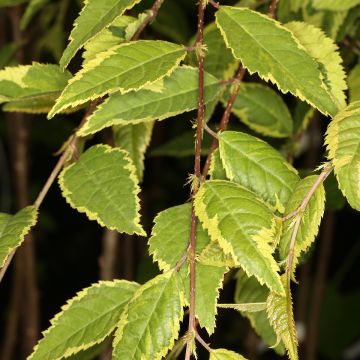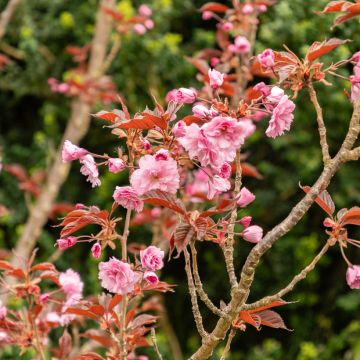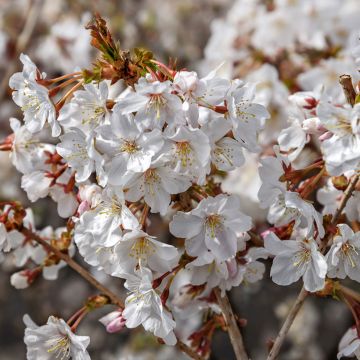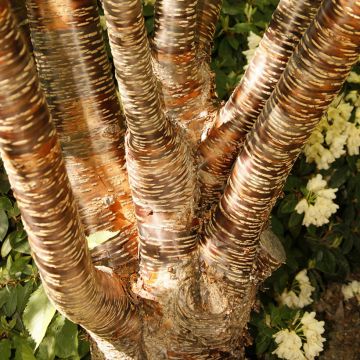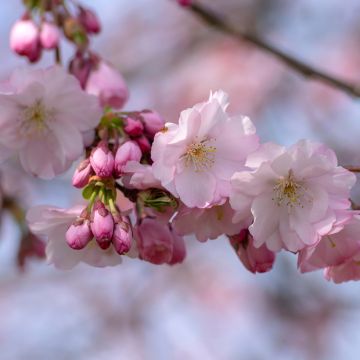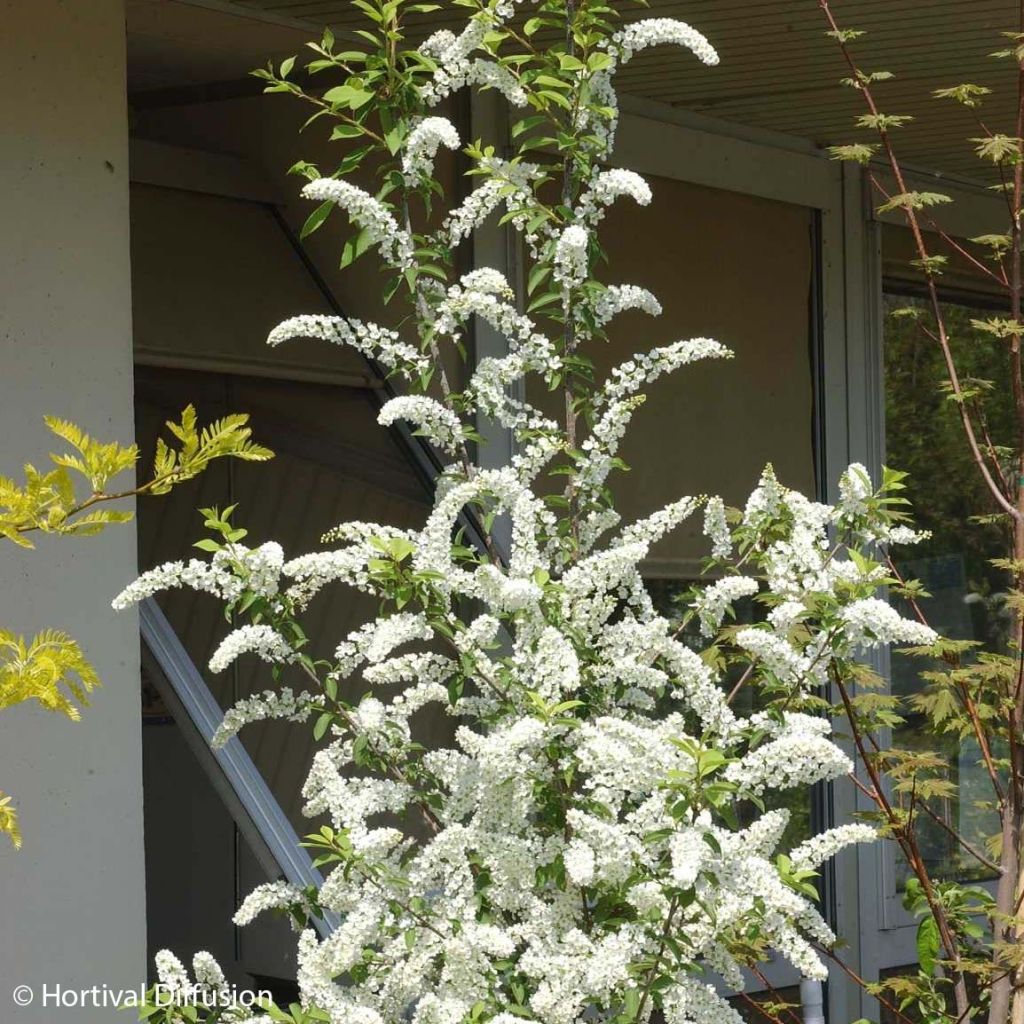

Prunus padus Le Thoureil
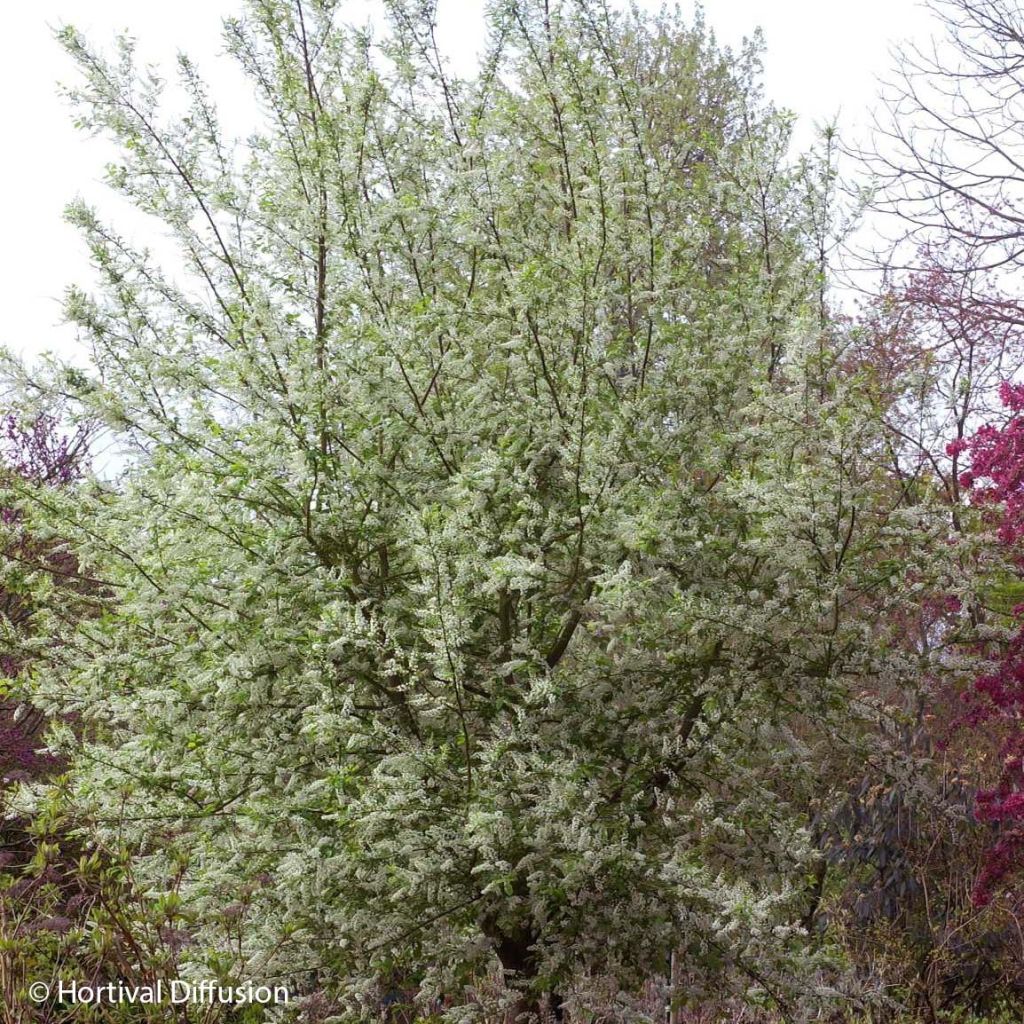

Prunus padus Le Thoureil
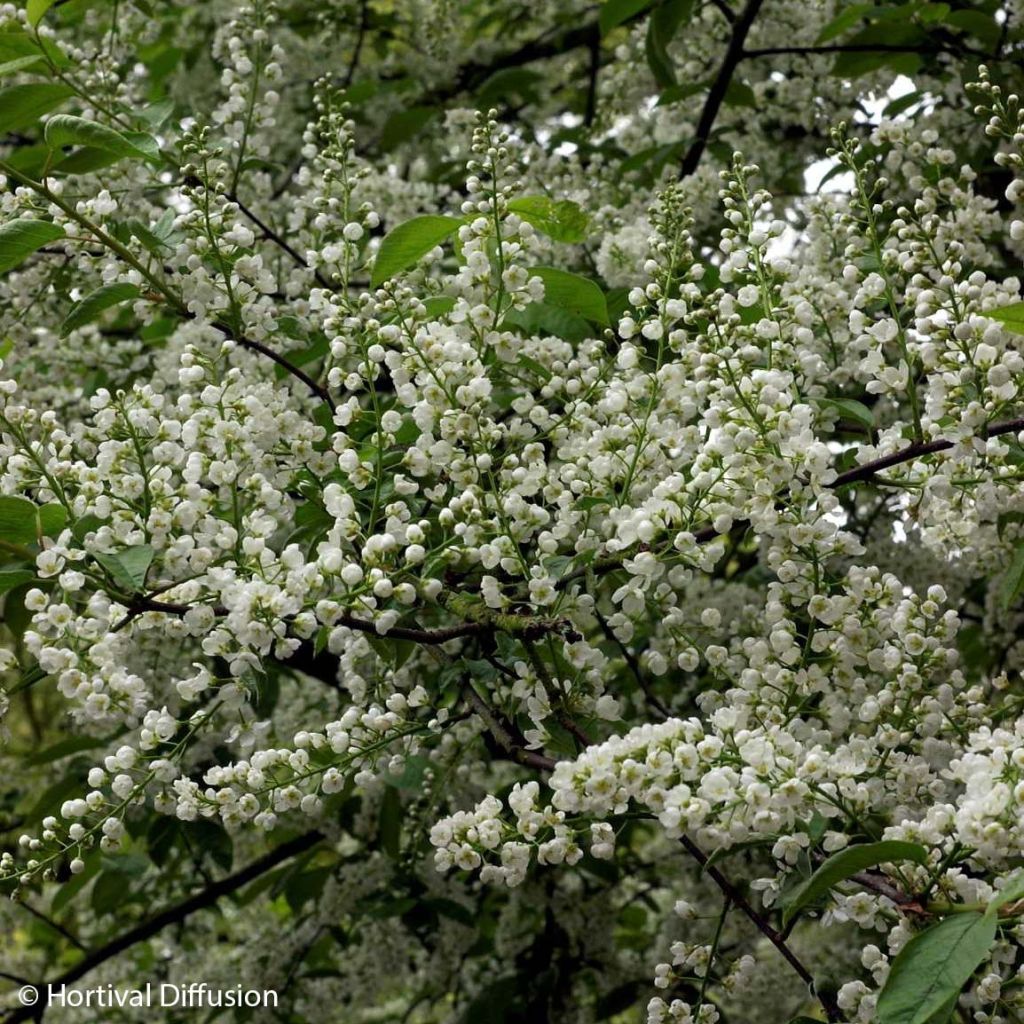

Prunus padus Le Thoureil
Prunus padus Le Thoureil
Prunus padus Le Thoureil
Bird Cherry
Great bush and beautiful flowering
THEVENON, 16/09/2024
This item cannot be shipped to the selected country
Oversize package delivery charge from €6.90
Delivery to Corse prohibited
More information
Schedule delivery date,
and select date in basket
This plant carries a 24 months recovery warranty
More information
We guarantee the quality of our plants for a full growing cycle, and will replace at our expense any plant that fails to recover under normal climatic and planting conditions.
Oversize package: home delivery by special carrier from €6.90 per order..
Express home delivery from €8.90.
Delivery to Corse prohibited: UE law prohibits the import of this plant from mainland France to Corse as part of the fight against Xylella fastidiosa. Please accept our sincere apologies.
More information
Does this plant fit my garden?
Set up your Plantfit profile →
Description
Prunus padus Le Thoureil is a charming cluster cherry tree, selected by Minier nurseries for its generous flowering and its narrow and truly graceful habit. Its reddish-brown bark is decorative in winter, its arching branches are covered with white and fragrant flowers in early spring, then with small black cherries, which ripen in late summer. Excellent in a mixed hedge where it feeds bees and birds, this cherry tree also makes a beautiful tree to highlight when planted alone. Its moderate growth is suitable for medium-sized gardens.
Prunus padus belongs to the large family of Rosaceae. It is native to Europe, northern Asia, and can be found in Japan as well. Its natural habitat corresponds to rather humid environments, where it grows spontaneously on clay and sometimes limestone soil, which is seasonally waterlogged. This shrub, which suckers when not grafted, naturally forms thickets, but it does not tolerate competition from other shrubs.
The cultivar 'Le Thoureil', obtained by Minier in 1998, has a more upright habit, less vigorous growth, and more numerous flower clusters. Grafted on a stem, it forms a single trunk and a narrow, semi-open, rather oval and bushy crown. At maturity, the tree will reach an average height of 7-8m (23-26ft) with a spread of 3-4m (10-13ft), depending on the growing conditions.
The bark of the trunk and older branches is reddish-brown with clear lenticels, while the twigs are redder. The branches emit a scent of bitter almond when broken. The leaves are deciduous in winter and fall at the end of the season. They are apple green in spring, turning dark green in summer, and are covered with numerous tufts of down on the undersides. They are ovate to obovate, finely dentate along the edges, and measure 6 to 15cm (2 to 6in) in length. The foliage takes on a beautiful yellow-golden colour in autumn before falling. Flowering occurs in April-May (sometimes in June) depending on the region, on branches already covered with young leaves. It takes the form of small white 5-petalled flowers, 1cm (1in) in diameter, with a delightful scent of bitter almond, arranged in pendulous clusters about 15cm (6in) long. Pollinated by insects, the nectar-rich flowers give way to small 'cherries' the size of peas, which ripen in July-August. These berries, with little flesh and large stones, have a bitter to sour and astringent taste and are sometimes used to make liqueurs, jellies, or jams. The harvest is uneven and varies in a cycle of 3 years.
The Le Thoureil cherry tree is very hardy and easy to grow, it will thrive in most regions, provided it has deep and damp soil for its roots to dive into. It can be planted in an open position, for example, alone or in a loosely planted group of trees. In a shrub border or mixed hedge, it can be combined with many spring-flowering shrubs and small trees, such as ornamental apple trees, flowering peach trees, Prunus mahaleb, quince trees, medlar trees, blackthorn, dogwoods, viburnums, Chinese almond tree, hawthorns... It can be pruned in winter to limit its size.
Report an error about the product description
Prunus padus Le Thoureil in pictures


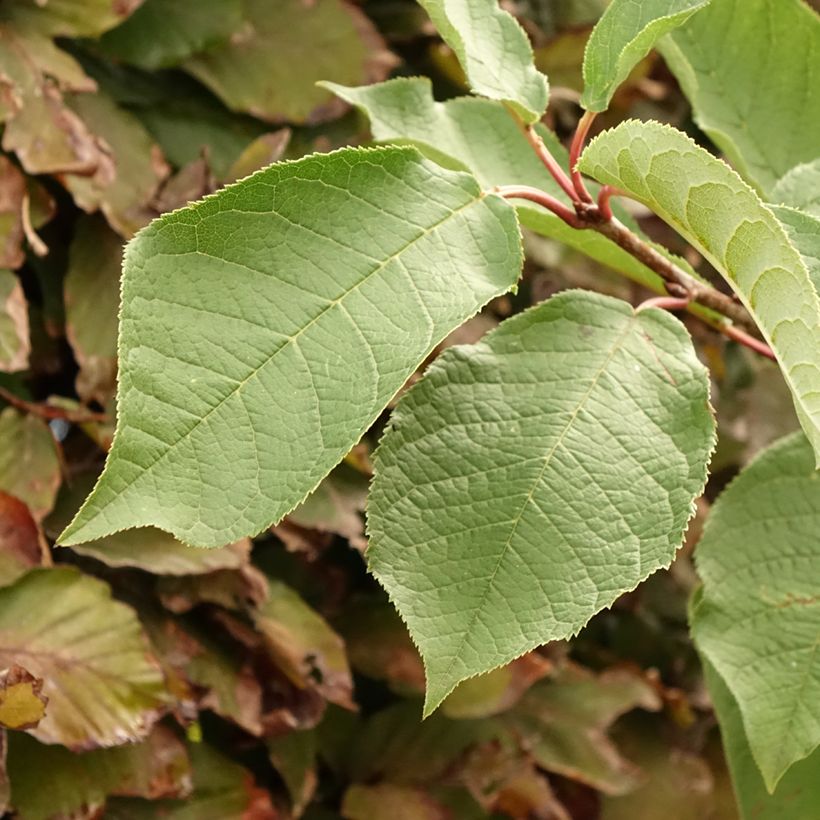

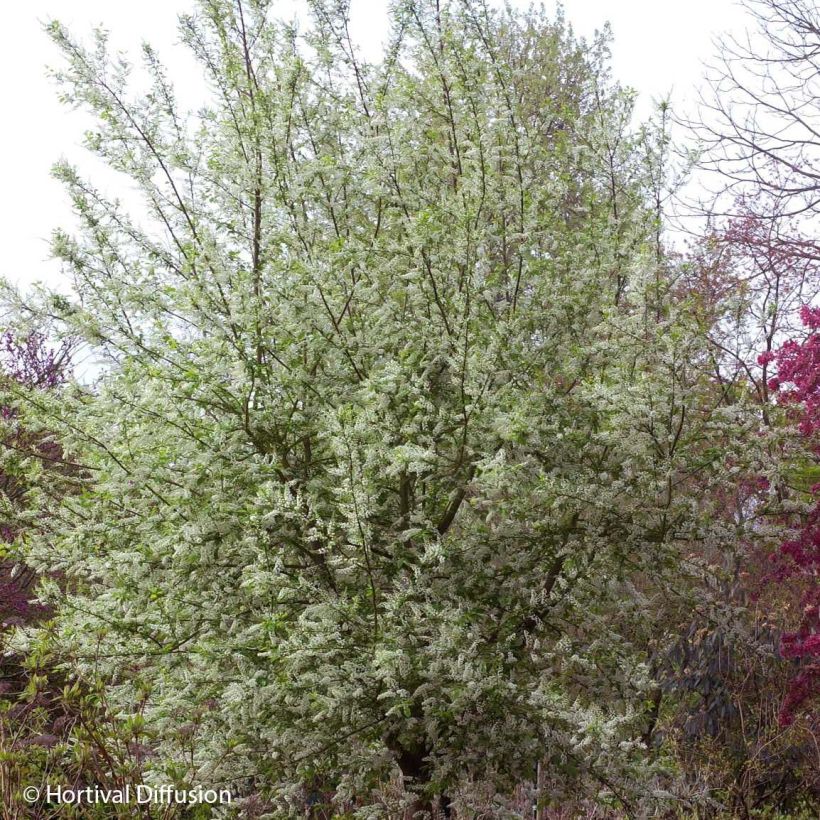

Plant habit
Flowering
Foliage
Botanical data
Prunus
padus
Le Thoureil
Rosaceae
Bird Cherry
Cultivar or hybrid
Other Prunus
Planting and care
Prunus padus Le Thoureil bush can be planted in spring or autumn, depending on the climate. It thrives in full sun or partial shade, in any type of soil, with a preference for deep, not too dry clay-limestone soils. It does not appreciate excessively hot and arid exposures, nor the competition from the roots of other bushes, nor the shade from large trees. This tree tolerates heavy and compact soils, even occasionally waterlogged. Once well established in deep soil, it is however capable of withstanding moderate summer drought quite well. Water regularly during the first two years to help it establish. Dig a large planting hole. The young leaves can be damaged by late frosts: avoid locations exposed to cold and dry winds. This bush of our countryside has few natural enemies.
Planting period
Intended location
Care
-
, onOrder confirmed
Reply from on Promesse de fleurs
Haven't found what you were looking for?
Hardiness is the lowest winter temperature a plant can endure without suffering serious damage or even dying. However, hardiness is affected by location (a sheltered area, such as a patio), protection (winter cover) and soil type (hardiness is improved by well-drained soil).

Photo Sharing Terms & Conditions
In order to encourage gardeners to interact and share their experiences, Promesse de fleurs offers various media enabling content to be uploaded onto its Site - in particular via the ‘Photo sharing’ module.
The User agrees to refrain from:
- Posting any content that is illegal, prejudicial, insulting, racist, inciteful to hatred, revisionist, contrary to public decency, that infringes on privacy or on the privacy rights of third parties, in particular the publicity rights of persons and goods, intellectual property rights, or the right to privacy.
- Submitting content on behalf of a third party;
- Impersonate the identity of a third party and/or publish any personal information about a third party;
In general, the User undertakes to refrain from any unethical behaviour.
All Content (in particular text, comments, files, images, photos, videos, creative works, etc.), which may be subject to property or intellectual property rights, image or other private rights, shall remain the property of the User, subject to the limited rights granted by the terms of the licence granted by Promesse de fleurs as stated below. Users are at liberty to publish or not to publish such Content on the Site, notably via the ‘Photo Sharing’ facility, and accept that this Content shall be made public and freely accessible, notably on the Internet.
Users further acknowledge, undertake to have ,and guarantee that they hold all necessary rights and permissions to publish such material on the Site, in particular with regard to the legislation in force pertaining to any privacy, property, intellectual property, image, or contractual rights, or rights of any other nature. By publishing such Content on the Site, Users acknowledge accepting full liability as publishers of the Content within the meaning of the law, and grant Promesse de fleurs, free of charge, an inclusive, worldwide licence for the said Content for the entire duration of its publication, including all reproduction, representation, up/downloading, displaying, performing, transmission, and storage rights.
Users also grant permission for their name to be linked to the Content and accept that this link may not always be made available.
By engaging in posting material, Users consent to their Content becoming automatically accessible on the Internet, in particular on other sites and/or blogs and/or web pages of the Promesse de fleurs site, including in particular social pages and the Promesse de fleurs catalogue.
Users may secure the removal of entrusted content free of charge by issuing a simple request via our contact form.
The flowering period indicated on our website applies to countries and regions located in USDA zone 8 (France, the United Kingdom, Ireland, the Netherlands, etc.)
It will vary according to where you live:
- In zones 9 to 10 (Italy, Spain, Greece, etc.), flowering will occur about 2 to 4 weeks earlier.
- In zones 6 to 7 (Germany, Poland, Slovenia, and lower mountainous regions), flowering will be delayed by 2 to 3 weeks.
- In zone 5 (Central Europe, Scandinavia), blooming will be delayed by 3 to 5 weeks.
In temperate climates, pruning of spring-flowering shrubs (forsythia, spireas, etc.) should be done just after flowering.
Pruning of summer-flowering shrubs (Indian Lilac, Perovskia, etc.) can be done in winter or spring.
In cold regions as well as with frost-sensitive plants, avoid pruning too early when severe frosts may still occur.
The planting period indicated on our website applies to countries and regions located in USDA zone 8 (France, United Kingdom, Ireland, Netherlands).
It will vary according to where you live:
- In Mediterranean zones (Marseille, Madrid, Milan, etc.), autumn and winter are the best planting periods.
- In continental zones (Strasbourg, Munich, Vienna, etc.), delay planting by 2 to 3 weeks in spring and bring it forward by 2 to 4 weeks in autumn.
- In mountainous regions (the Alps, Pyrenees, Carpathians, etc.), it is best to plant in late spring (May-June) or late summer (August-September).
The harvesting period indicated on our website applies to countries and regions in USDA zone 8 (France, England, Ireland, the Netherlands).
In colder areas (Scandinavia, Poland, Austria...) fruit and vegetable harvests are likely to be delayed by 3-4 weeks.
In warmer areas (Italy, Spain, Greece, etc.), harvesting will probably take place earlier, depending on weather conditions.
The sowing periods indicated on our website apply to countries and regions within USDA Zone 8 (France, UK, Ireland, Netherlands).
In colder areas (Scandinavia, Poland, Austria...), delay any outdoor sowing by 3-4 weeks, or sow under glass.
In warmer climes (Italy, Spain, Greece, etc.), bring outdoor sowing forward by a few weeks.

































